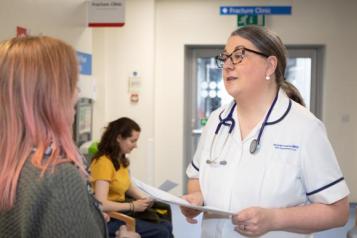CQC tells Midlands Partnership University NHS Foundation Trust improvements still needed to keep people safe
CQC carried out a focused inspection of the acute wards for adults of working age and psychiatric intensive care units (PICUs) at St George’s Hospital in Stafford and The Redwoods Centre in Shrewsbury
The inspection took place to assess if improvements had been made following the previous inspection last year and to see if the trust had met the requirements of the warning notice previously issued.
At this latest inspection in June, CQC found the trust had met the requirements of the previous warning notice but found additional concerns. Therefore, it will be monitored and assessed to check sufficient improvements have been made and CQC will keep it under close review during this time to make sure people are safe.
As this was a focused inspection looking at the areas of safe and well led, both services were not rerated and remain rated as inadequate overall and for being safe and well-led.
Andy Brand, CQC deputy director of operations in the midlands, said:
“Although it was encouraging to see that leaders and staff had worked hard to address the issues highlighted during our previous inspection, it was also disappointing to find additional areas where improvements need to be made.
“One of the key areas of concern during our last inspection was around people’s sexual safety. During our most recent inspection we found that the services had worked hard to put systems in place to help prevent risks to people, including increased monitoring and observations. However, we weren’t assured staff were recording and reporting all safety incidents which could put people at risk of harm.
“Another area we were concerned about following our previous inspection was around people being allowed to go on leave from the ward even though there had been a number of serious incidents when people had previously gone out into the community. Staff informed us improvements have been made and they now carry out thorough checks including, assessing peoples’ mental states. It was positive to see that this process was now embedded as a routine practice.
“We’ve reported our findings to the provider, and they know what they must address and the areas in which they’ve improved. We’re working closely with the trust to ensure people are receiving safe care and we will return to inspect the trust to make sure more improvements have been made.”
Inspectors found:
- The trust’s ligature risk assessments identified all areas of potential risk including staff areas and detailed actions to reduce the harm from those risks within all the wards we visited.
- The trust was working in partnership with Shropshire Fire and Rescue Service and had a robust action plan to address actions which had identified in the fire safety risk assessments.
- Managers ensured that all staff working on the wards we visited now had regular supervision. These discussions included staff being able to request additional training as required.
- Managers ensured that all temporary staff had a ward specific induction and agency nurses now had access to the trust’s electronic recording system.
- The trust was able to demonstrate that staff working on the wards we visited always assessed peoples’ mental state at the point of taking leave and recorded these discussions and decisions in their records.
- The trust was able to demonstrate how staff working on the wards we visited managed people’s personal property including items deemed to be a risk.
However:
- While staff now managed and had systems in place for peoples’ personal items of potential risk well. They did not log items of potential risk on the ward that were not specific to a person, for example communal ward lighters.
- Staff did not always respond to incidents of potential risk in a timely way. Staff did not mitigate against the risk of further incidents occurring. Staff did not always hand over incident information at ward handover meetings.
- Staff did not always report incidents including safety incidents.
